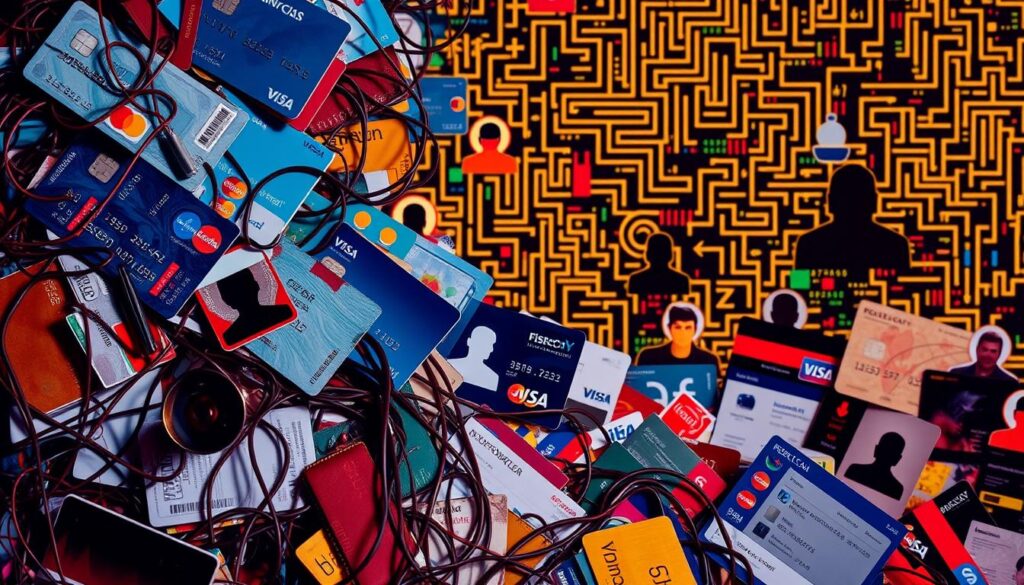Do you feel someone is steering your choices without you noticing? Dark psychology teaches how manipulators carve power through persuasion, secrecy, and urgency.
You’ll learn to spot decisive cues and defenses that flip control back to you. Start by understanding how uncertainty creates an asymmetry of information that leaves you vulnerable to fraud and exploitation.
Short, practical checks help you catch inconsistencies across documents and accounts. The FTC notes identity issues like mismatched Social Security numbers or sudden card requests as clear warning signs. Millions of Americans face identity theft yearly, with billions lost; these facts make vigilance a personal priority.
Train a verify-first mindset: initiate contact, demand proof, and never use channels supplied by the person pressing you. Pause when pressure spikes, favor data over stories, and align personal habits with how businesses spot flags to reduce your risk.
Key Takeaways
- Asymmetry of information is a core tactic; insist on clear data to neutralize it.
- Urgency, secrecy, and isolation are engineered to bypass your checks—pause and verify.
- Conflicting details are often deliberate signs, not clerical errors.
- Use a verify-first rule: you contact independent channels for proof.
- Adopt business-style controls to shrink your personal risk curve.
- Small favors can be reciprocity traps—watch for layered asks.
- When pressure rises, pivot to facts and independent validation.
The Dark Psychology Behind Red Flags: How Manipulators Seize Power

“Hidden levers—like urgency and reciprocity—are how manipulators shift power without overt threats.”
Manipulators build advantage by creating manufactured confusion and an asymmetry of information. That gap makes you follow their pace instead of your checks.
Why red flags exist in manipulation
They want control, not answers. Expect pressure to skip verifications, vague purpose, and rapid requests for your name, date, or other identity cues.
Core levers: persuasion, compliance, and control
- Authority pretexts: a supposed CFO or bank rep calls your phone asking for wire changes—verify via known contact channels.
- Reciprocity: a small favor becomes a gateway for suspicious activity and later fraud.
- Fear-of-loss: urgent stories compress time and force bad choices.
Signature psychological tells
Watch for shifting stories, mismatched details, and requests to bypass policy. Treat vagueness as intentional and demand clear information.
Map these cues to business hygiene: if a process falls apart under verification, it is likely part of a fraud pattern.
Detecting Red Flags in Identity and Account Activity

Catch early signs of identity takeover with simple, repeatable account checks. Quick audits break the urgency and secrecy manipulators use to force mistakes.
Identity theft indicators you can spot fast
Look for unusual account activity: out-of-pattern transactions, sudden multiple accounts, or rapid limit increases. Treat these as immediate red flags for possible identity theft and theft escalation.
Scan documents for mismatched address, date of birth, or social security number across your accounts. Inconsistency is a signal, not noise.
Watch an address change followed by a request for a new card or credit card within 30 days — the FTC flags this sequence as a common theft tactic.
Personal defense moves against data manipulation
Initiate contact. Call the number on your card or your financial institution app. Never follow an unsolicited phone link or email.
- Lock personal information: shred statements, secure mail, and never carry your SSN.
- Audit credit reports and set alerts for unfamiliar inquiries or surprise tradelines.
- Use strong passphrases that avoid birthdates or SSN fragments and rotate them regularly.
When pressure spikes, pause and verify—speed favors attackers; verification favors you.
Fraud Patterns in Transactions, Payments, and Customer Profiles

Pay attention when routine transactions suddenly look unfamiliar or out of place. Small changes in timing, location, or purchase types often signal manipulation. Treat those shifts as data, not anomalies.
Behavioral and payment anomalies manipulators exploit
Urgency, secrecy, and isolation drive many schemes. Watch for transactions inconsistent with a customer’s history—luxury buys, foreign POS activity, or sudden invoice spikes.
Information red flags across accounts
Same number or address tied to different names, conflicting details across accounts, or rapid opening of multiple accounts are warning signs. Cross-check name, address, and ID number to confirm consistency.
Documentation manipulation
Missing or altered documents—edited invoices or blank registrations—often hide malicious intent. Keep originals and require signed attestations for changes.
Practical checks to regain power and control
- No verified callback, no change: always call a known number before altering payments.
- Segregate duties: dual approvals and daily reconciliations reduce secrecy.
- Log anomalies: track suspicious activity and outcomes to spot repeat patterns and lower risk.
AML Red Flags: Money Laundering Signals Hiding in Plain Sight
Illicit funds move fastest when systems are opaque, complex, and rushed—learn to hold the pace.
Manipulators use time pressure and layering to turn normal payments into a camouflage for illegal flows.
High-risk patterns aligned with FATF guidance
Prioritize money laundering signatures: sudden cash surges, layered transactions, and opaque accounts. Complexity without clear purpose is a manipulator’s camouflage.
Industry-specific pressure points
In a financial institution, watch for reluctant disclosures and foreign PEPs whose activity misaligns with the customer profile.
Real estate often shows short holding periods and third-party payments. Gambling can feature inconsistent betting and repeated large wins.
Operational defenses that deter manipulators
- Strengthen CDD/EDD: verify beneficial ownership and escalate PEPs.
- Monitor continuously: behavioral analytics and transaction rules expose layering.
- Use biometrics: reduce identity manipulation and enhance security.
- File SARs promptly: follow FATF typologies to convert ambiguity into action.
Personal and business warning signs to log immediately
| Signal | Typical Sector | Immediate Defense |
|---|---|---|
| Sudden cash surge | Real estate, financial institution | Freeze transaction; require source-of-funds |
| Layered transactions via intermediaries | Trade, services | Map flow; verify counterparties |
| Opaque ownership / shell | All sectors | Independent beneficial ownership check |
| Misaligned customer story | Gambling, banking | Enhanced due diligence; escalate |
Action: for every customer, align stated purpose, counterparties, and amount. Where purpose is weak, up the scrutiny and document decisions to deter fraud and reduce risk.
Conclusion
Simple routines—verification, logging, and pause—shrink the space fraud needs to act.
Pause when pressured. Urgency hides contradictions. Slow down, call your bank or provider using a known number, and demand documents you can verify.
Trust patterns over stories. Mismatched social security entries, odd account number changes, or an address edit followed by a new card request are practical red flags.
Lock down personal information, shred sensitive paperwork, use strong passphrases, and track anomalies like multiple accounts. Early verification breaks identity theft and theft attempts before loss occurs.
Want the deeper playbook? Get The Manipulator’s Bible – the official guide to dark psychology. https://themanipulatorsbible.com/

